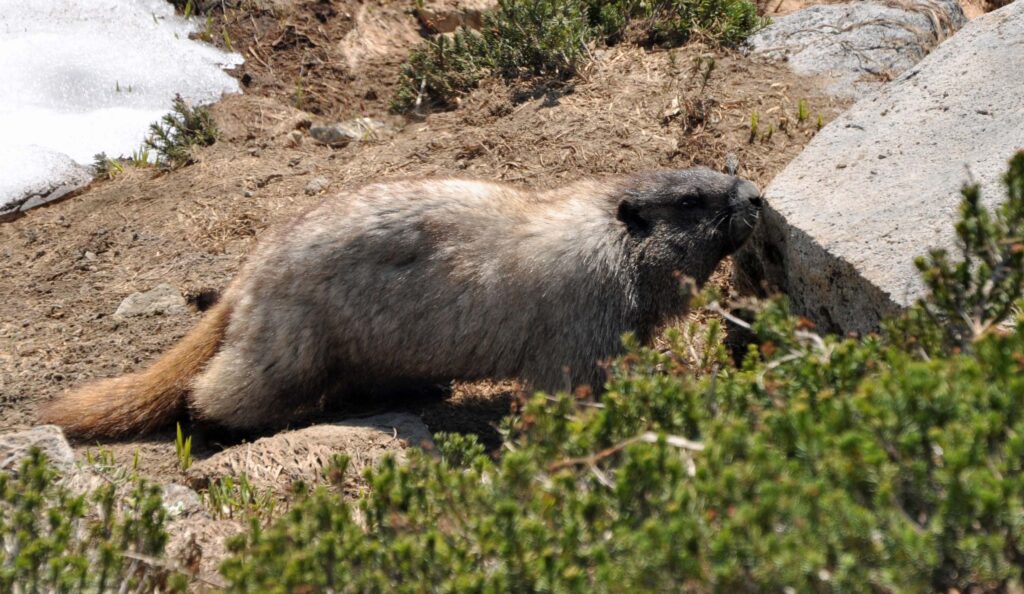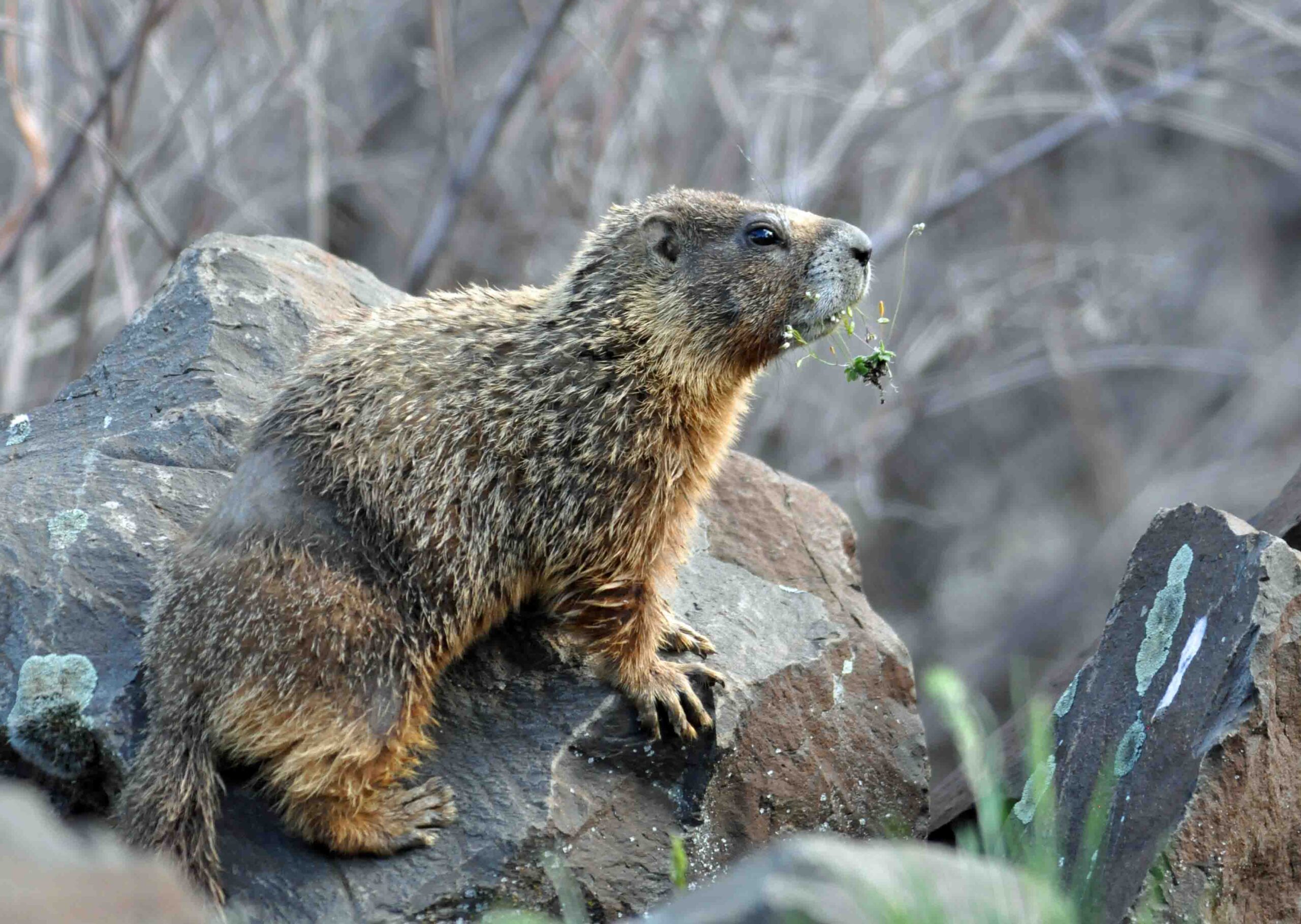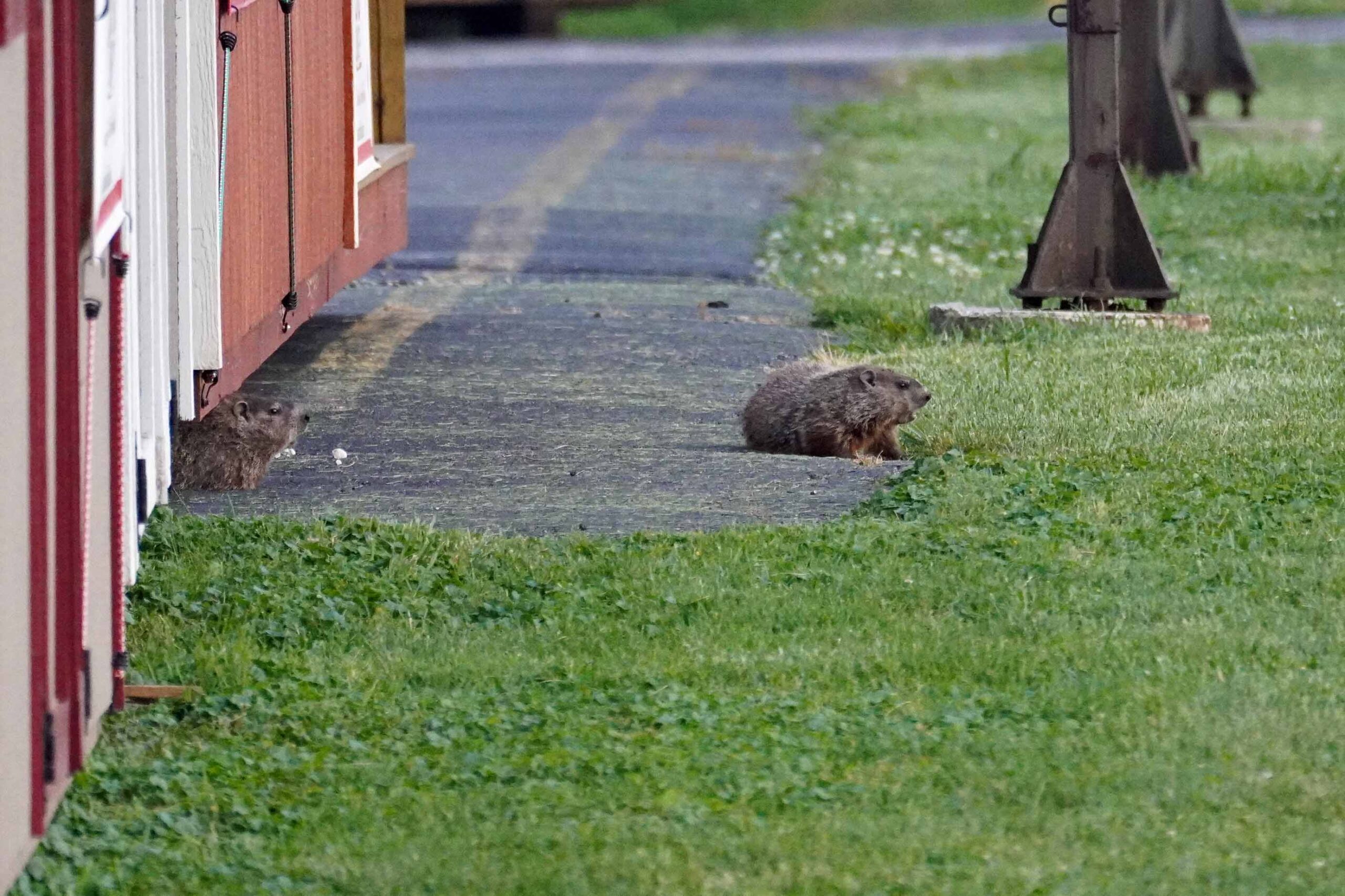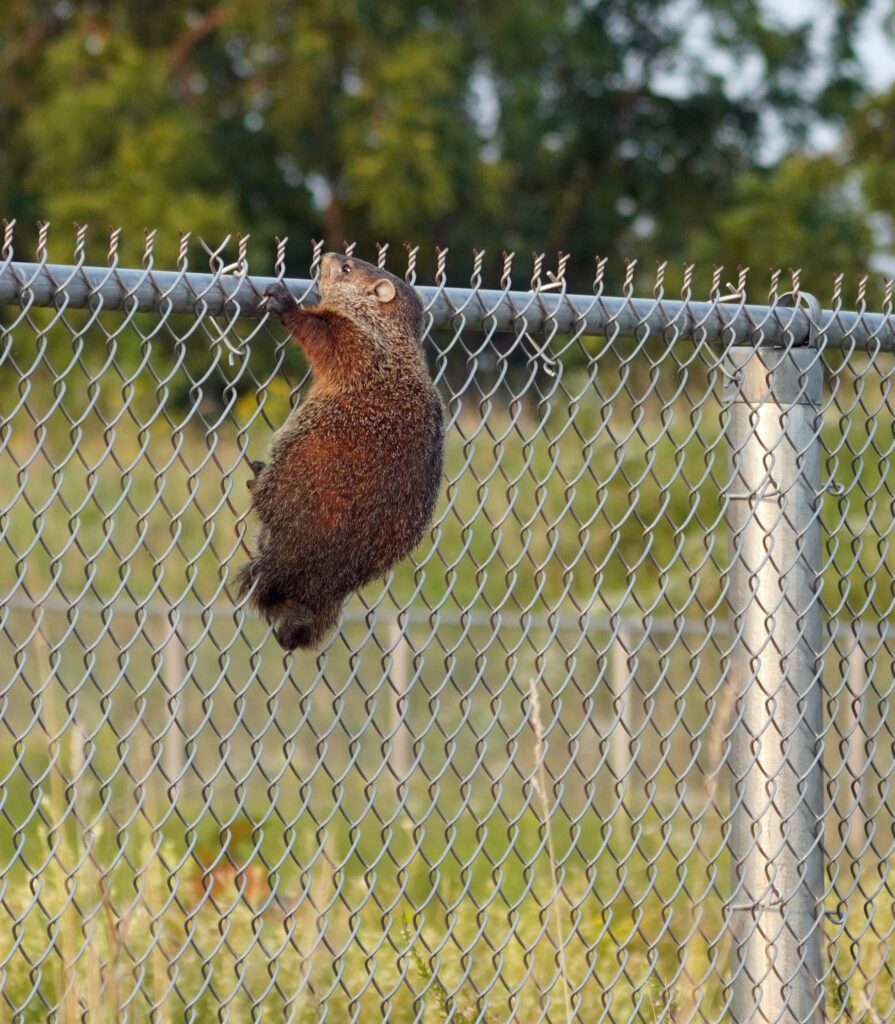The Hoary Marmot is the largest of our NW species. Large colonies inhabit high levels of Mount Rainier. Yellow-Bellied Marmots also live in big colonies and make alert noises similar to Hoary Marmots, yet they inhabit sea level. I’ve seen Woodchucks in my backyard a few years ago, but the ones I were able to film were in other states. Those labeled as the IL Woodchuck lived under a shed in front of a business right alongside of a very busy highway. Once in West Virginia just outside of the hotel I stayed in, I found a Woodchuck climbing a fence. That was as surprise.
As the weather chills up here in the Northwest there are animals that we will not be seeing for a while. Quite a few birds and mammals disappear over our winter season, but right now I want to focus on the largest members of the squirrel family – the Marmots. They are hibernators that attempt a lot of fat gain before winter. As they search for their food and enjoy breeding season, marmot colonies are a big attraction in Mount Rainier and other high elevations. And there are other marmot species that do not want to live up in a mountain. From low to high elevation here are the ones we are most likely to see in our area:
Woodchucks – Also called Ground Hogs, and often seen in backyards.
Yellow-Bellied Marmot – A ground dwelling marmot named in honor of its stomach color.
Olympic Marmot – Found in the lower levels of the Olympic Mountains in Washington.
Hoary Marmot – The species that lives above tree lines, also known as the Whistle Marmot due to the very loud squeals they make.
Other marmots are found all over our country, including Alaska. The most common (and unwelcome) is the woodchuck/ground hog. No, they are not little hogs that chuck wood. But when they have picked a human backyard for a home, their burrowing and gobbling up vegetation is not welcome. This does not bother me, but I’ve seen homes where it does from Washington to New York. I have also witnessed some unusual behavior of the woodchucks, as noted in the photos above. I have not yet seen the Olympic marmot yet, but I will be looking for it this fall.
And if you love marmots or squirrels I highly recommend this great book which was my resource for marmot information and the book I use many times to identify squirrels:
Squirrels of the West by Tamara Hartson
<
>





Leave a Reply
You must be logged in to post a comment.